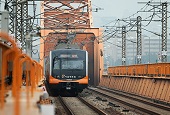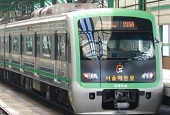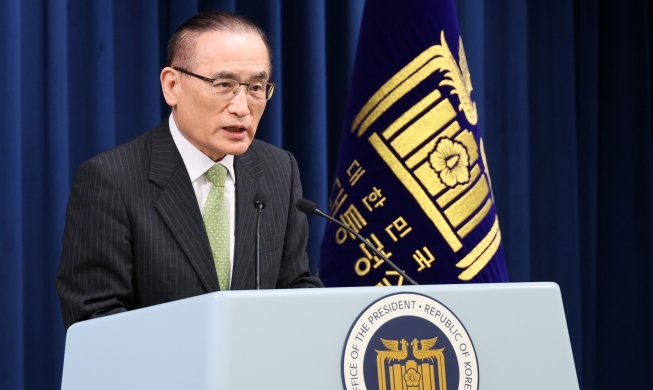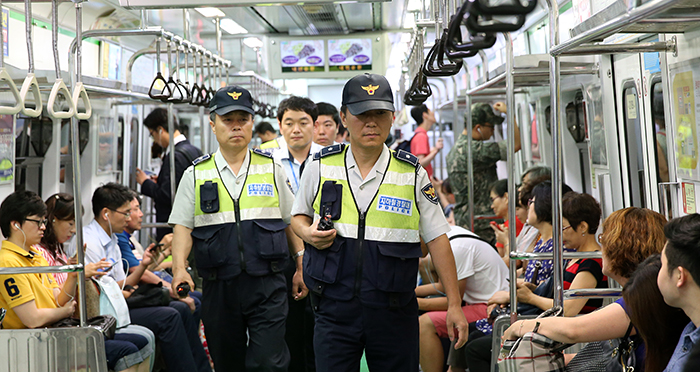
Chief Inspector Kim Yeong-chae (right) and Kim Sun-cheol of Seoul's subway police unit patrol a car on line No. 2, along with other police officers.
This year marks the 40th anniversary of Seoul's metro system. History began on August 15, 1974, with the original Jongno Line, now line No. 1, connecting nine stops between Seoul Station and Cheongnyangni Station.
Forty years later, there are nine subway lines, plus assorted other train and commuter lines, operating in the greater Seoul area. As of 2013, the subway system was used by more than 2.6 billion passengers in an average year, about a third of humanity. Also, with more than 300 stations scattered across the greater metropolitan area, the subway system provides people with an easy and convenient transportation option.
Since 1974, the number of subway lines has grown, passenger loads have multiplied and new security features are added each year.
In 1987 when there were only four subway lines, the Seoul Metropolitan Police Agency launched its Subway Criminal Investigation Team. It is responsible for all the crimes committed in subway cars and station buildings, and also has a mandate to prevent such potential crimes.
The team was formed only with 28 detectives in charge of violent crimes, but gradually expanded to become today's Subway Police Force in 2005. They work in two teams at 19 local police stations.
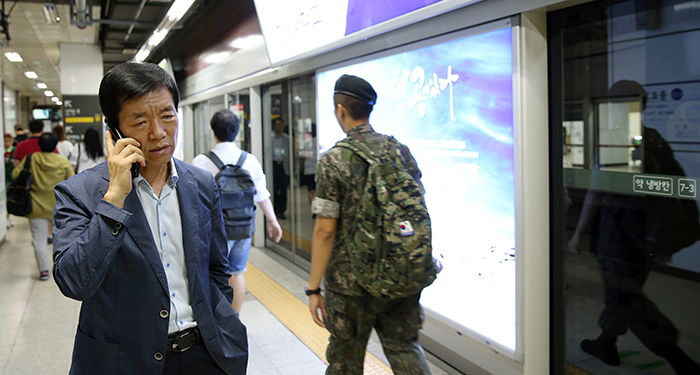
Chief Investigator Park Seong-dong talks on the phone with his fellow officers at the Jongno 3-ga Station. He said that uniformed policemen go out on formal patrol while plainclothes cops conduct other observation duties.
"The metro is one of the most-used public transportation systems in Seoul," said Park. "Our team -- both uniformed policemen and investigators -- are fully prepared to deal with, and prevent, people from committing any possible crimes. There are plainclothes officers on duty, both in the cars and around station buildings, to prevent possible crimes. Also, with surveillance cameras installed to record almost all areas of every individual station, we are able to track any suspect if any crime is thought to have been committed."
"Korea today has grown into a country with more than 10 million tourists per year," continued Park. "The number of tourists expected to use the metro is set to grow, especially during big events like the Incheon Asian Games. We are prepared to deal with the greatest number of metro-users and we plan to increase our enforcement capabilities."
He added that, "Many people tend to help tourists who are in trouble or who are being exposed to possible crimes. Just in case, however, for those who might happen to sense some danger, you will be able to find emergency alarm bells around the platforms and many other points in every station. If you can't, call 112. Language services are available in English, Japanese, Mandarin, Vietnamese and Mongolian."
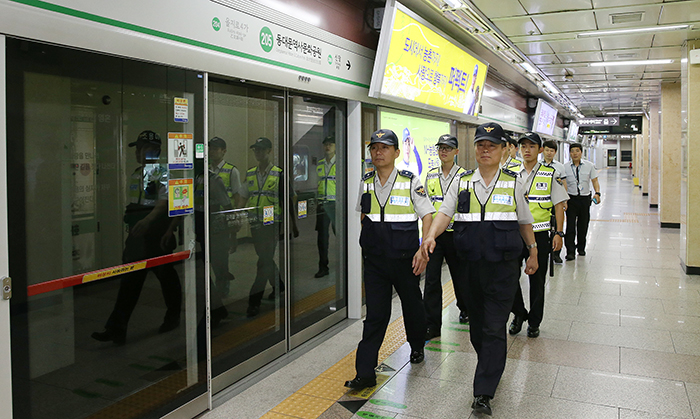
Chief Inspector Kim Yeong-chae (right) and Kim Sun-cheol of Seoul's subway police unit head out on patrol along with other police officers around the Dongdaemun History & Culture Park Station.
"Even if I am not familiar with a particular language," said Inspector Kim, working in the office at the Dongdaemun History & Culture Park Station, "I will try my best to help. Also, we work in partnership with the Korea Tourism Organization which can help tourists with translation services."
By Jeon Han, Lee Seung-ah
Photos by Jeon Han
Korea.net Staff Writers
hanjeon@korea.kr
